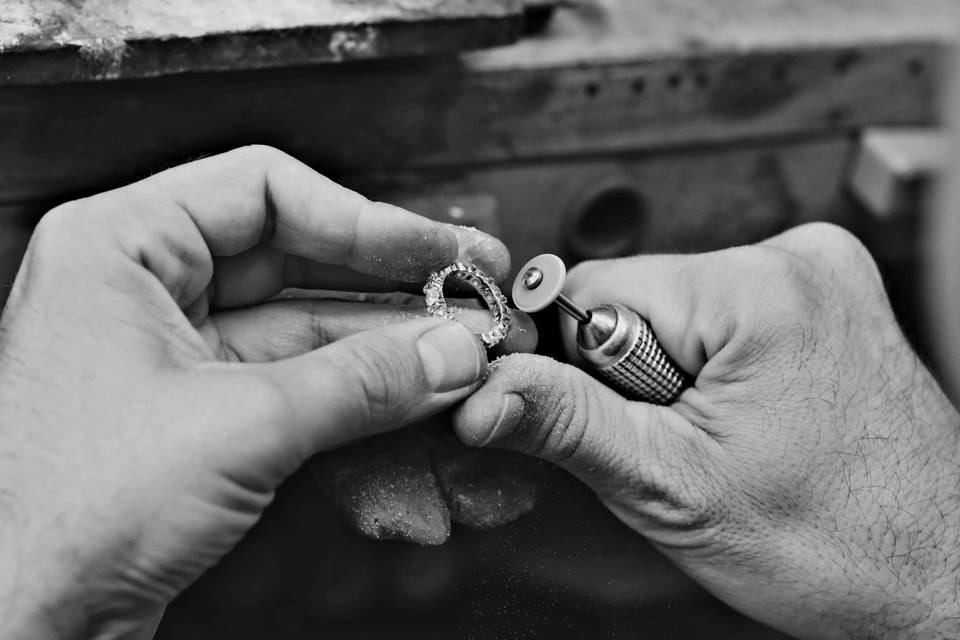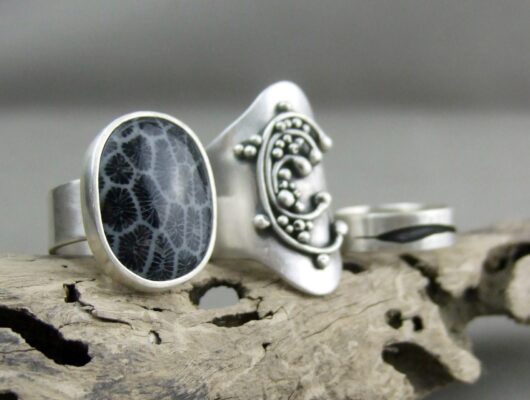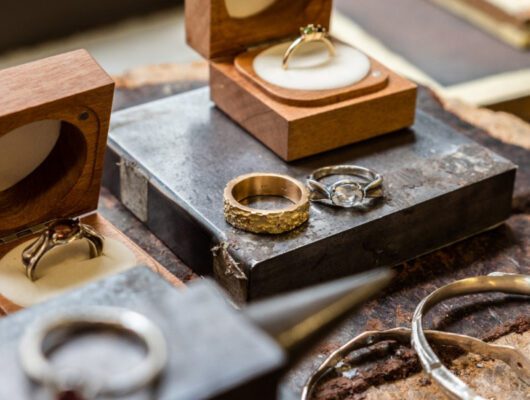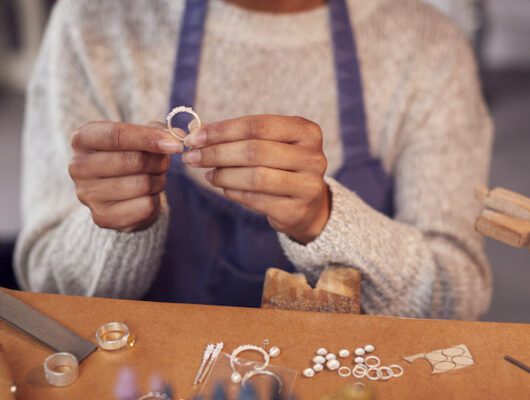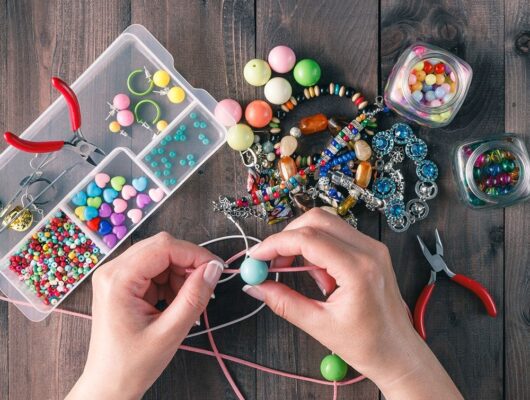In the intricate world of jewelry, the role of a reliable and skilled jewelry manufacturer is paramount. Whether you are a seasoned jeweler or a budding artisan, understanding the nuances of working with a jewelry manufacturer is crucial for the success and quality of your creations. This comprehensive guide delves into the intricacies of choosing, collaborating with, and optimizing the services of a jewelry manufacturer. From selecting the right partner to navigating production processes, this guide aims to empower jewelers on their journey to crafting exquisite pieces.
Understanding the Role of a Jewelry Manufacturer:
-
Craftsmanship and Expertise:
- A reputable jewelry manufacturer brings a wealth of craftsmanship and expertise to the table. From intricate designs to the selection of materials, experienced manufacturers contribute significantly to the overall quality and aesthetic appeal of your jewelry.
-
Material Sourcing and Quality Control:
- Manufacturers play a crucial role in material sourcing, ensuring the use of high-quality metals, gemstones, and other components. Quality control processes, such as inspections and certifications, are integral to maintaining the standard of your jewelry.
-
Technological Capabilities:
- Modern jewelry manufacturing often involves advanced technologies like CAD/CAM, 3D printing, and laser cutting. Assessing a manufacturer’s technological capabilities is essential, as it impacts the precision, efficiency, and customization possibilities for your designs.
Choosing the Right Jewelry Manufacturer:
-
Define Your Requirements:
- Before selecting a manufacturer, clearly define your requirements. Consider the type of jewelry you specialize in, the materials you prefer, and your production volume. This clarity will help you find a manufacturer aligned with your specific needs.
-
Research and Shortlist:
- Conduct thorough research to identify potential manufacturers. Seek recommendations, read reviews, and explore their portfolios. Shortlist manufacturers whose expertise and capabilities match your requirements.
-
Check Credentials and Experience:
- Verify the credentials and experience of potential manufacturers. Look for industry certifications, testimonials from other jewelers, and evidence of their successful collaboration with businesses similar to yours.
-
Quality Assurance Processes:
- Inquire about the manufacturer’s quality assurance processes. Reliable manufacturers adhere to industry standards, conduct regular inspections, and ensure that each piece meets the specified quality benchmarks.
-
Customization and Flexibility:
- If customization is important for your brand, choose a manufacturer that is flexible and willing to adapt to your design specifications. A collaborative and responsive manufacturer allows you to bring your unique visions to life.
-
Communication and Transparency:
- Effective communication is key to a successful partnership. Choose a manufacturer with transparent communication channels, clear pricing structures, and a willingness to address your concerns promptly. A transparent relationship fosters trust and collaboration.
-
Visit the Manufacturing Facility:
- Whenever feasible, visit the manufacturing facility to gain firsthand insights into the production process, working conditions, and overall professionalism. This visit can provide a deeper understanding of the manufacturer’s capabilities and commitment to quality.
Navigating the Production Process:
-
Design Collaboration:
- Collaborate closely with the manufacturer during the design phase. Clearly communicate your design specifications, provide detailed drawings or prototypes, and discuss any customization requirements. A collaborative approach ensures that the final product aligns with your vision.
-
Material Selection:
- Work closely with the manufacturer to select the materials for your jewelry. Discuss the quality, sourcing, and availability of metals and gemstones. Ensure that the chosen materials align with your brand’s standards and the expectations of your target market.
-
Prototype and Sampling:
- Before mass production, request prototypes or samples of your designs. This step allows you to assess the craftsmanship, quality, and overall aesthetics of the pieces. Address any modifications or adjustments during this phase to ensure the final production meets your expectations.
-
Quality Control Checks:
- Emphasize the importance of quality control checks throughout the production process. Regular inspections and adherence to quality standards are crucial for delivering consistently high-quality jewelry. Collaborate with the manufacturer to establish and maintain stringent quality control measures.
-
Timelines and Production Capacity:
- Clearly define production timelines and discuss the manufacturer’s production capacity. Ensure that the manufacturer can meet your volume requirements within the specified timeframe. A reliable production schedule contributes to efficient inventory management and timely product launches.
-
Cost and Pricing Structure:
- Discuss the cost of production and the pricing structure with the manufacturer. Understand the breakdown of costs, including materials, labor, and any additional fees. Ensure that the pricing aligns with your budget and allows for a reasonable profit margin.
-
Intellectual Property Protection:
- Address intellectual property considerations in your agreement with the manufacturer. Clearly outline ownership rights, confidentiality clauses, and any restrictions on the use of your designs. Protecting your intellectual property is crucial in the jewelry industry.
What Jewelry Manufacturer Equipment and Props Do I Need?
Setting up a jewelry manufacturing workshop requires careful consideration of the equipment and tools you’ll need to bring your designs to life. Here’s a comprehensive list of essential jewelry manufacturing equipment and props:
1. Bench Tools:
- Jeweler’s Bench: A sturdy workbench designed for jewelry making, providing a comfortable and organized workspace.
- Bench Pin: Attached to the bench, used for sawing, filing, and other precision work.
- Ring Clamp: Holds rings securely during various jewelry-making tasks.
- Third Hand: An adjustable tool with clamps, useful for holding small components during soldering.
2. Hand Tools:
- Pliers (Flat-nose, Round-nose, Chain-nose): For bending, shaping, and gripping metal.
- Wire Cutters: To cut wire and metal components.
- Files: Different types for smoothing and shaping metal.
- Hammers (Chasing, Planishing): Used for shaping and texturing metal.
3. Soldering Equipment:
- Torch: A jeweler’s torch for soldering and annealing metal.
- Soldering Pick: Used to manipulate and apply solder.
- Flux: A substance used to prevent oxidation during soldering.
4. Casting Equipment:
- Crucible: A container for melting metal for casting.
- Centrifugal Casting Machine or Vacuum Casting Machine: For creating molds and casting metal.
5. Polishing and Finishing Tools:
- Polishing Motor: A machine with polishing wheels for finishing jewelry.
- Tumblers: Used for mass finishing and polishing small jewelry components.
6. Measuring and Marking Tools:
- Calipers: For precise measurements.
- Rulers and Scales: Essential for accurate sizing.
- Dividers: Used for marking and measuring.
7. Molding and Wax Carving Tools:
- Carving Wax: Material for creating models.
- Wax Carving Tools: For shaping and carving wax models.
- Injection Wax and Wax Injector: Used in the injection molding process.
8. Lapidary Equipment:
- Gemstone Faceting Machine: For cutting and polishing gemstones.
- Lapidary Saw: Cuts gemstones into desired shapes.
9. Safety Equipment:
- Safety Glasses: Eye protection during various processes.
- Apron and Gloves: Protection from heat, chemicals, and sharp objects.
- Ventilation System: Ensures proper air circulation when working with fumes.
10. Metalworking Machinery:
- Rolling Mill: Used to flatten and shape metal.
- Drill Press: For drilling precise holes in metal.
- Lathe: Useful for turning and shaping metal.
11. Storage and Organization:
- Drawers and Cabinets: For organizing tools and materials.
- Tool Organizer: Keeps hand tools easily accessible.
- Storage Bins: For organizing small components.
12. Materials and Consumables:
- Metals (Gold, 925 Sterling Silver, etc.): Raw materials for creating jewelry.
- Gemstones and Diamonds: Depending on your designs.
- Solder: Various types for different metals.
- Polishing Compounds: For achieving a smooth finish.
13. Jewelry Display Props:
- Busts and Displays: Showcase finished pieces.
- Mirrors: Enhance the presentation of jewelry.
- Lighting: Proper illumination for display areas.
14. Computer and Design Software:
- Computer: For designing, modeling, and managing your business.
- CAD Software: If you’re involved in computer-aided design for jewelry.
15. Packaging Materials:
- Jewelry Boxes: Elegant packaging for finished pieces.
- Tissue Paper and Bags: To protect and present the jewelry.
16. Photography Equipment:
- Camera: For capturing high-quality images of your jewelry.
- Lightbox: Ensures even lighting for product photography.
Investing in quality jewelry manufacturing equipment and props is essential for creating beautiful and marketable pieces. Consider your specific needs, the scale of your operation, and the type of jewelry you specialize in when selecting tools and equipment. Additionally, prioritize safety measures to ensure a secure and comfortable working environment. As you build your jewelry manufacturing workshop, a well-equipped space will contribute to the efficiency, precision, and creativity of your craft.
How do you manufacture jewelry?
Manufacturing jewelry involves a combination of traditional craftsmanship and modern techniques. The process can vary based on the type of jewelry, materials used, and the desired outcome. Here is a general overview of the jewelry manufacturing process:
1. Designing:
- Sketching or CAD Design: The process often begins with a design concept. Jewelers either sketch the design on paper or use Computer-Aided Design (CAD) software to create a digital model.
2. Material Selection:
- Choosing Metals and Gemstones: Once the design is finalized, the jeweler selects the appropriate materials. Common metals include gold, silver, platinum, and others. Gemstones, if used, are also chosen based on the design and client preferences.
3. Model Making:
- Wax Carving or 3D Printing: A physical model of the design is created. This can be done through traditional wax carving or by using 3D printing technology to produce a wax model.
4. Casting:
- Mold Creation: The wax model is encased in a mold, which is then heated to remove the wax (lost-wax casting) or used for creating multiple copies.
- Metal Casting: Molten metal is poured into the mold to create the final metal piece. This can be done through various casting methods, including centrifugal casting or vacuum casting.
5. Finishing:
- Filing and Shaping: The cast metal piece is filed and shaped to refine the details and smooth any rough surfaces.
- Soldering: Various components may be soldered together to assemble the final piece.
- Polishing and Buffing: The jewelry is polished to achieve a smooth and shiny finish. This step may involve the use of polishing compounds and tools such as polishing wheels.
6. Setting Gemstones:
- Stone Setting: If the design includes gemstones, they are carefully set into the metal. This can involve techniques like prong setting, bezel setting, or pave setting.
7. Final Quality Check:
- Inspection: The finished piece undergoes a thorough quality check to ensure it meets the design specifications and quality standards.
8. Surface Finishing:
- Surface Treatments: Depending on the design, additional treatments like enameling, plating, or oxidation may be applied for specific effects.
9. Assembling:
- Connecting Components: In cases where the jewelry has multiple components, such as chains or clasps, these are assembled to create the final piece.
10. Packaging and Presentation:
- Packaging: The completed jewelry is carefully packaged, often in custom-designed boxes or pouches.
- Presentation: For retail purposes, jewelry is displayed and presented attractively, sometimes using jewelry display props.
11. Marketing and Distribution:
- Photography: High-quality images are captured for marketing purposes.
- Distribution: The finished jewelry is either sold directly to customers, through retail outlets, or online platforms.
12. Customer Service:
- After-Sales Services: Jewelers often provide after-sales services such as resizing, repairs, or cleaning to maintain customer satisfaction.
13. Adapting to Trends:
- Staying Current: Successful jewelry manufacturers stay abreast of industry trends, technology advancements, and customer preferences to adapt and innovate.
The jewelry manufacturing process is a blend of artistic craftsmanship and technical precision. Each step, from design conception to the final presentation, requires skill, attention to detail, and a commitment to quality. Whether crafting custom pieces or producing collections for retail, jewelers navigate through various stages to create stunning and meaningful jewelry that resonates with customers.
How do I start making my own jewelry?
Starting to make your own jewelry can be a rewarding and creative endeavor. Here’s a step-by-step guide to help you get started:
1. Define Your Style and Niche:
- Explore Styles: Consider the types of jewelry you are interested in making. Whether it’s beaded jewelry, wire-wrapped designs, metalwork, or intricate beadwork, define your style.
- Identify Niche: Determine if you want to specialize in a specific niche, such as vintage-inspired pieces, bohemian jewelry, or modern and minimalist designs.
2. Learn Basic Jewelry Making Techniques:
- Research Techniques: Familiarize yourself with basic jewelry making techniques. This may include wire wrapping, beading, stringing, metal stamping, and basic metalwork.
- Online Resources: Utilize online tutorials, videos, and instructional websites to learn the fundamentals. Many platforms offer free or affordable courses.
3. Gather Essential Tools and Materials:
- Basic Tools: Acquire essential tools like pliers, wire cutters, round-nose pliers, crimping pliers, and bead scoops.
- Materials: Depending on your chosen style, gather materials such as beads, wires, findings, clasps, and any additional components specific to your designs.
4. Take a Jewelry Making Class:
- Local Classes or Workshops: Look for local classes or workshops at community colleges, art centers, or craft stores. Learning in a classroom setting can provide hands-on experience and guidance.
- Online Courses: Explore online platforms offering jewelry making courses. Websites like Skillshare, Udemy, or YouTube have a variety of tutorials for different skill levels.
5. Practice Basic Projects:
- Start Simple: Begin with basic projects to hone your skills. Create simple designs like beaded bracelets, earrings, or simple wire-wrapped pendants.
- Experiment: Don’t be afraid to experiment with different materials and techniques. This is an essential part of the learning process.
6. Invest in Quality Materials:
- Choose Quality: As you progress, consider investing in higher-quality materials. This can enhance the overall look and durability of your creations.
- Explore Metals: If interested in metalwork, experiment with basic metals like copper or brass before moving on to more precious metals like silver or gold.
7. Create Your Workspace:
- Designate a Space: Set up a dedicated workspace for your jewelry making. Ensure it’s well-lit, organized, and has all the necessary tools within reach.
- Ventilation: If you’re working with certain materials or chemicals, ensure proper ventilation in your workspace.
8. Explore Advanced Techniques:
- Expand Skills: Once you’re comfortable with basic techniques, explore more advanced skills. This may include advanced wire wrapping, soldering, or incorporating more complex beadwork patterns.
- Take Specialized Courses: Consider taking specialized courses or workshops to deepen your knowledge in specific areas of interest.
9. Build Your Brand:
- Create a Brand Identity: If you plan to sell your jewelry, develop a brand identity. This includes choosing a brand name, creating a logo, and establishing a consistent style for your designs.
- Photography: Learn basic photography skills to showcase your jewelry effectively. High-quality images are essential for online platforms.
10. Start Selling Your Jewelry:
- Online Platforms: Consider selling your jewelry on online platforms such as Etsy, eBay, or through your own website.
- Local Markets or Craft Shows: Participate in local markets, craft shows, or artisan fairs to reach a local audience.
11. Connect with the Jewelry Community:
- Join Forums and Groups: Connect with other jewelry makers through online forums and social media groups. Share your work, ask questions, and learn from experienced artisans.
- Attend Events: Attend jewelry-making events, trade shows, or workshops to network with others in the industry.
12. Stay Inspired and Evolve:
- Stay Informed: Keep up with trends, techniques, and materials in the jewelry-making world. Follow industry blogs, magazines, and social media accounts.
- Continuous Learning: Jewelry making is an evolving craft. Embrace continuous learning and adapt your designs to stay relevant and inspired.
Embarking on your journey to make your own jewelry involves a mix of creativity, skill development, and business acumen. Whether it’s a hobby or a potential business venture, enjoy the process of learning, experimenting, and creating unique pieces that reflect your personal style. As you progress, your skills will evolve, and you’ll have the opportunity to share your creations with others who appreciate the artistry of handmade jewelry.
What is a jewelry manufacturer called?
A business or individual engaged in the production and manufacturing of jewelry is commonly referred to as a “jewelry manufacturer.” Custom jewelry manufacturers for small businesses can vary in scale and specialization, ranging from small artisanal workshops crafting handmade pieces to larger-scale operations employing advanced machinery for mass production.
Jewelry manufacturers play a crucial role in the jewelry industry, as they bring designs to life, handle the production process, and contribute to the creation of various types of jewelry, including rings, necklaces, bracelets, earrings, and more. These manufacturers may work with various materials, such as precious metals (gold, silver, platinum), gemstones, pearls, and alternative materials depending on the design and market they cater to.
Some jewelry vendors for small business may also specialize in certain aspects of the production process, such as casting, stone setting, or metal fabrication. Additionally, there are manufacturers who focus on specific types of jewelry, like engagement rings, bridal sets, or fashion jewelry.
The term “jewelry manufacturer” encompasses a diverse range of wholesale jewellery to retailers, wholesalers and individuals jewelry businesses and individuals involved in the craftsmanship and production of jewelry, contributing to the vibrant and dynamic landscape of the jewelry industry.
How much does Jewelry making cost?
The cost of jewelry making can vary widely depending on several factors, including the type of jewelry you create, the materials used, the scale of production, and your individual business setup. Here are some key cost considerations:
1. Materials:
- Metals: The cost of metals (gold, silver, platinum, etc.) can vary based on purity and weight.
- Gemstones: Precious and semi-precious gemstones vary significantly in price. Factors like size, quality, and rarity influence the cost.
- Beads and Findings: The cost of beads, clasps, wires, and other findings can add up, depending on the complexity and design of your pieces.
2. Tools and Equipment:
- Basic Tools: Pliers, wire cutters, files, and other basic tools are essential and have varying price ranges.
- Specialized Equipment: If you’re involved in advanced techniques like casting or stone setting, specialized equipment can be a significant investment.
3. Workspace Setup:
- Workspace: Setting up a dedicated workspace requires furniture, lighting, and storage solutions, which contribute to your initial costs.
4. Education and Training:
- Courses or Workshops: If you decide to take jewelry making courses or workshops, there may be associated fees.
5. Business Setup:
- Legal and Registration Fees: Costs associated with registering your business, obtaining licenses, and complying with regulations.
- Website Development: If you plan to sell online, creating a professional website incurs costs for domain registration, hosting, and design.
6. Marketing and Branding:
- Jewelry Photography: High-quality images are crucial for marketing your jewelry. Investing in a good camera or hiring a photographer can be a cost.
- Marketing Materials: Costs for business cards, promotional materials, and packaging contribute to your overall marketing budget.
7. Miscellaneous Costs:
- Packaging: Elegant packaging adds to the overall presentation but comes with a cost.
- Insurance: Consider insuring your inventory, tools, and workspace against potential losses.
8. Scaling the Business:
- Scaling Production: As your business grows, you might invest in scaling production, which can include hiring additional help or investing in more advanced equipment.
- Partnerships and Collaborations: Costs associated with collaborations, partnerships, or participation in trade shows or events.
9. Continuous Learning:
- Advanced Courses: If you decide to enhance your skills with advanced courses, there may be additional expenses.
10. Operational Costs:
- Utilities: If you have a dedicated workspace, consider the ongoing costs of utilities.
- Software: Tools and software for managing your business operations, accounting, and customer relations.
Tips for Cost Management:
- Budgeting: Develop a detailed budget that includes all potential costs, both one-time and ongoing.
- Bulk Purchases: Consider buying materials in bulk to take advantage of discounts.
- DIY vs. Outsourcing: Evaluate whether certain tasks, like photography or website development, can be done in-house or outsourced based on cost-effectiveness.
- Prioritize Essentials: When starting, focus on acquiring essential tools and materials. You can expand your collection as your business grows.
- Evaluate and Adjust: Regularly review your budget and adjust it based on the evolving needs of your business.
Here we are telling you about some calculations at different levels of gold prices. This will let you know what type of making charges will help you save money. While doing these calculations, it has been assumed that the weight of gold jewelry is 15 grams and the making charge is either Rs 300 per gram or 12 percent. GST has been kept out of the calculation.
-If the price of gold is Rs 50,000 per 10 grams
When making charges are flat rate per gram
Price of gold jewelery: Rs 5000 per gram X 15 grams = Rs 75,000
Making Charge: 15 grams X Rs 300 per gram = Rs 4500
Total cost = Rs 79,500
When making charges are in percentage
Price of gold jewelery: Rs 5000 per gram X 15 grams = Rs 75,000
Making Charge: 12% of Rs 75,000 = Rs 9000
Total cost = Rs 84,000
Cost difference: Rs 4,500 (Rs 84,000-79,500)
-If the price of gold is Rs 30,000 per 10 grams
When making charges are flat rate per gram
Price of gold jewelery: Rs 3000 per gram X 15 grams = Rs 45,000
Making Charge: 15 grams X Rs 300 per gram = Rs 4500
Total cost = Rs 49,500
When making charges are in percentage
Price of gold jewelery: Rs 3000 per gram X 15 grams = Rs 45,000
Making Charge: 12% of Rs 45,000 = Rs 5400
Total cost = Rs 50,400
Difference in cost: Rs 900 (Rs 50,400 – 49,500)
-If the price of gold is Rs 25,000 per 10 grams
When making charges are flat rate per gram
Price of gold jewelery: Rs 2500 per gram X 15 grams = Rs 37,500
Making Charge: 15 grams X Rs 300 per gram = Rs 4500
Total cost = Rs 42,000
When making charges are in percentage
Price of gold jewelery: Rs 2500 per gram X 15 grams = Rs 37,500
Making Charge: 12% of Rs 37,500 = Rs 4500
Total cost = Rs 42,000
Cost difference: Rs 0 (Rs 42,000 – Rs 42,000)
Keep these things in mind also
studded jewelery
Sometimes we buy jewelery in which gems (stones) are studded. Some dishonest jewelers weigh the entire piece and add it to the price of gold. That means their price is set equal to the value of gold. The weight and impurities of the stone are usually deducted from the total value when it is sold back.
purity of gold
Gold jewelery comes in different carats. Carat is the measure of purity of gold. The purest gold is 24 carat. Jewelery usually comes in 22 carats. It contains 91.6 percent gold.
Remember, the cost of jewelry making can vary widely, and it’s important to carefully plan and manage your expenses to ensure the financial sustainability of your jewelry business.
Conclusion:
Choosing the right jewelry manufacturer is a strategic decision that profoundly influences the quality, design, and success of your jewelry business. A reliable manufacturer not only brings technical expertise but also becomes a collaborative partner in bringing your artistic visions to life.
As you navigate the world of jewelry manufacturing, prioritize transparency, effective communication, and a commitment to quality. A strong partnership with a reputable manufacturer for small businesses is a cornerstone of a successful jewelry business, enabling you to create stunning pieces that captivate customers and establish your brand as a symbol of craftsmanship and elegance. By following this comprehensive guide, jewelers can embark on a journey of collaboration, innovation, and enduring success in the ever-evolving landscape of the jewelry industry.


